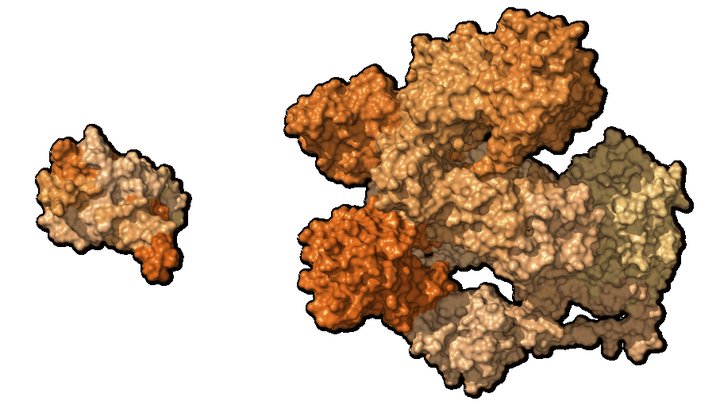Following up on last week’s rant, about what a lousy job the good Lord did in creating humans, I want to compare our messy design with the stellar structure of the Covid-19 virus. Now we’re talking! Elegance, compactness, robustness… SARS-CoV-2 has it all, and then some.
The virus that’s causing all-round global chaos is estimated to have 29,829 base pairs in its tiny ribbon of RNA, which is small potatoes compared with just over 3 billion base pairs in human DNA. That is, we have about 100,000 as many base pairs as the virus does.
(
Coincidentally, 100,000 is a useful number when trying to visualize the 120 nanometer virus: a grain of salt is about 100,000 times the size of the virus, while the human body is about 100,000 times the size of that grain of salt.
Briefly:
- Virus genome base pairs : human genome base pairs :: 1 : 100,000
- Virus size : grain of salt :: 1 : 100,000
- Grain of salt : human size :: 1 : 100,000
)
So what can the SARS-CoV-2 virus do with its comparatively tiny ribbon of RNA? A lot! Thirty thousand base pairs translate into about 29 proteins (complex amino acid-based molecules), which together make this little half-alive, half-dead critter such an effective scourge of humankind.
Included in its arsenal are the spike proteins (the “corona”) that glom onto cells, particularly those lining human lungs; saboteurs that force human cells to make copies of the virus; scissors that cut the parts of virus’ RNA to let them do their own jobs; camouflage proteins that effectively hide the virus from human antibodies; proofreaders to check that copies of the virus are accurate (and repairs them if they’re not); Houdini proteins that poke a hole in an infected human cell; and more.

Part of the SARS-CoV-2 RNA. Left, NSP-1, the “saboteur” protein that hijacks the cell’s own DNA, forcing it to make copies of the complete virus RNA. Right, NSP-3, the “scissors” protein that cuts loose other proteins from the RNA ribbon inside the virus. (RCSB Protein Bank)
(Incidentally, researchers have shown that the spike proteins, which allow SARS-CoV-2 to force, an entry into our cells are a particularly snug fit. They 10-20 times more likely to bind to the ACE-2 cells lining our lungs than the original SARS-CoV that came and went between 2002 and 2004. Which is probably why the present pandemic is so much more virulent.)
So – from a theological point of view – what gives? If the lord God made them all, great and small (per the lovely old hymn), why did She make this little critter so elegantly efficient, while making humans such a shambles? You can’t blame the pressure of creation on this mismatch, by the way, since viruses have been around since Day 1, defined as when the first life on Earth arose, four billion years ago give or take. (One idea, the virus-first hypothesis, posits that viruses predated cells, and that they were actually instrumental in the formation of the first cells.)
Last week, I barely touched on all our shortcomings, just mentioning our badly designed eyes, neck and our inability to synthesize many essential vitamins. Other flaws include: a woman’s pelvis, which is barely able to pass a baby’s head; sperm cells that can only turn right, meaning they spend a lot of wasted time going in circles to reach the egg, so what should take an hour takes up to three days; seven complicated bones in each ankle, when just one would do the same job; and knees that are frequently prone to torn ACLs because we never properly adapted to bipedalism.
I’m not saying the coronavirus currently crippling us is any smarter or wiser than us — appreciating a Bach cantata or a glass of Pinot Noir is probably beyond its ken — but from the point of view of survivability, my money’s on the virus. Chances are, it’ll be around long, long after we’re gone.
CLICK TO MANAGE